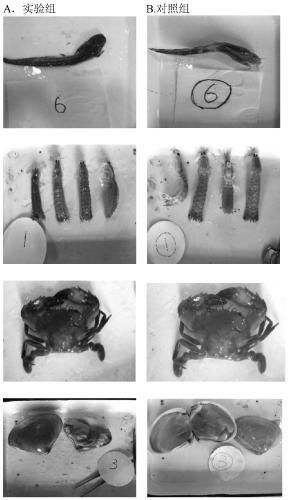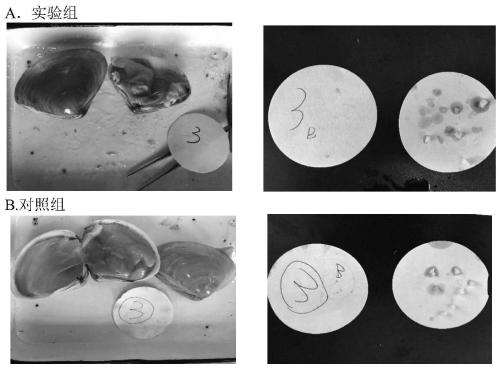Environment-friendly composite mildew-proof preservative and application thereof
An environmentally friendly, antiseptic technology, applied in the direction of application, biocide, disinfectant, etc., can solve the problems of white sediment and turbidity, loss of the function of preserving specimens, and concentration reduction, so as to achieve no secondary pollution and scientific composition Safe and low toxicity effect
- Summary
- Abstract
- Description
- Claims
- Application Information
AI Technical Summary
Problems solved by technology
Method used
Image
Examples
Embodiment 1
[0044] Embodiment 1: the preparation of environment-friendly composite anti-mildew preservative
[0045] The invention provides an environment-friendly composite anti-mildew preservative mainly composed of the following components: chitosan 100-10000PPM, chitosan quaternary ammonium salt 100-10000PPM, nano-silver 100-10000PPM, sodium benzoate 100-10000PPM, Kai Pine 100-10000PPM, the balance is water.
[0046] According to the preparation of the above components, an environment-friendly compound anti-mildew preservative can be obtained.
Embodiment 2
[0047] Example 2: Anti-mildew effect detection of environment-friendly compound anti-mildew preservative
[0048] 1) Selected strains for testing: Aspergillus niger, Aspergillus oryzae, Trichoderma, Penicillium, Aspergillus white, and Aspergillus flavus (all are molds isolated from biological specimens);
[0049] 2) Detection method: plate inhibition zone method (using nutrient agar plate);
[0050] 3) Detection temperature: 26℃±2℃;
[0051] 4) Detection time: 72 hours;
[0052] 5) test result: antiseptic preparation of the present invention all has obvious inhibitory effect to selected bacterial classification, and the diameter of inhibition zone is as follows: Aspergillus albicans 160mm, Aspergillus niger 130mm, Aspergillus flavus 136mm, Penicillium 130mm, Trichoderma 113mm, rice Aspergillus 142mm.
Embodiment 3
[0053] Embodiment 3: the bacteriostasis effect detection of environment-friendly compound anti-mildew preservative
[0054] 1) Selected test strains: Bacillus subtilis, Escherichia coli, Proteus, Streptococcus, Staphylococcus aureus, etc. (all are routine laboratory strains);
[0055] 2) Detection method: plate inhibition zone method (using nutrient agar plate);
[0056] 3) Detection temperature: 35°C±1°C;
[0057] 4) Detection time: 24 hours;
[0058] 5) Test result: measure with a caliper. Experimental results show that the antiseptic preparation of the present invention has obvious inhibitory effects on the selected strains, and the diameter of the inhibition zone is between 20-35mm.
PUM
 Login to View More
Login to View More Abstract
Description
Claims
Application Information
 Login to View More
Login to View More - R&D
- Intellectual Property
- Life Sciences
- Materials
- Tech Scout
- Unparalleled Data Quality
- Higher Quality Content
- 60% Fewer Hallucinations
Browse by: Latest US Patents, China's latest patents, Technical Efficacy Thesaurus, Application Domain, Technology Topic, Popular Technical Reports.
© 2025 PatSnap. All rights reserved.Legal|Privacy policy|Modern Slavery Act Transparency Statement|Sitemap|About US| Contact US: help@patsnap.com



